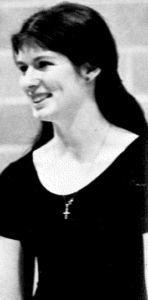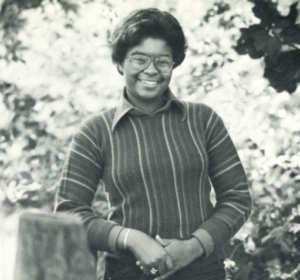Marsha Williams ’77
My mother and father were both educators. They understood that if you’re Black, you’re going to have to work twice as hard to reach the same level as your white peers, so their thinking was, “Let’s give our children the best possible education we can.”

My oldest brother was the first member of our family to go to a private school — one that wasn’t Seven Hills or any of its predecessor schools. As my mother was driving me to my first day at College Preparatory School in seventh grade, she told me about when she and my father had received harassing and threatening phone calls because my brother had been a Black kid attending a different almost all-white private school. The harassment and threats went on for months. I had never heard any of this before because my parents intentionally kept it from us, but it made a lot of the weird things that had been going on at home finally make sense, like why, seemingly overnight, we kids were not allowed to answer the phone anymore. As my mother is telling me this, driving me to my first day at CPS, I’m getting more and more afraid, and I don’t want to get out of the car.

My mother said, “I’m just telling you this because I need you to be careful. It’ll be fine, but I need you to be careful.” She knew Hillsdale was a safe environment from my older sisters going there, but she didn’t really know College Preparatory School. I got out of the car that morning, and it was the longest walk of my life from the car to the front door of the school. I opened the door looking for Black faces, thinking the more Black faces I saw, the safer I would feel. To my relief, once I got past those beginning jitters of wondering, “Am I going to feel safe here?” I loved it. I loved that it was small, that the size created a sense of closeness and a level of intimacy. The grades were almost too small to break off into cliques.

The teacher who still stands out most in my mind is Leslie Oganowski, “Mrs. O” is what we called her. She was a gym teacher, a coach for several teams, and she also taught health. In seventh grade, we had to take health class — puberty and sex and all that stuff. The reason Mrs. O stands out is that very early on, maybe the second week of school, we were in health class, and one of my classmates raised her hand to answer a question, and in the classmate’s anecdote said a variation of the n-word. When you’re one of only two Black kids in the class and that happens, you just kind of freeze. Mrs. O swooped in so quickly and shut it down so fast! She said, “We do not use that language in this classroom or in this school!” She shut it down so firmly and so swiftly, and she became my hero. It was a big exhale. I thought, “This place is safe. The teachers will look out for you.”
Over time, I became diehard about CPS. It felt like one supportive community. Hillsdale was our biggest rival, and we joked about how we looked down on them, because we went to school in these beautiful old ivy-covered buildings and their school used to be a farm and their classrooms were still in barns.
Then, when I was in ninth grade, the merger was announced. They announced it in morning assembly, and I was devastated. None of the students saw it coming. I remember going outside to the bleachers by the hockey field with my friend Julie Ziegler Perry and a few other girls. We just needed to process it, to lament. The administrators weren’t sure about a lot of things, but they told us the new unified Upper School would definitely be at Red Bank.

When I started at the new Seven Hills in 10th grade, I wasn’t very happy about it. In the beginning, there were so few CPS girls compared to Hillsdale girls. For them, they were staying on the same campus, so their lives didn’t change that much. For us, our lives changed a lot. We were the newbies. We were small in number. It was pretty clear who was a CPS girl and who was a Hillsdale girl. Everything felt more cliquish. And all of the sudden, we had eight or nine boys in our class of around 60 students. It was just enough to disrupt things. The girls would have crushes, but there weren’t even enough boys to go around.
If you’re a Black kid, and you’re going to a private school, you learn early on that you’re going to have to figure out how to deal in a white environment. That was not specific to Seven Hills, but it’s something I had to learn at a young age. The whole culture at the school at that time was almost like everyone was going to pretend that race doesn’t exist. No one was having open talks about race and privilege then.

Almost three decades later, I attended a Seven Hills graduation ceremony for my nieces, and I was glad to see a lot more Black students on that stage, even if it was still just 10 or 15 percent of the class. I’ve had conversations in more recent years with a friend who was on the Seven Hills board about how the school stopped reporting percentages of students from specific ethnic backgrounds and moved to the more general, catch-all language of “people of color,” but that doesn’t always tell the more specific story.
Just recently, I was talking with one of those nieces who’d attended Seven Hills. She lives in New York now and is a mother herself, and the challenge still remains for a lot of Black families — how do you give your child the best possible education without having them be one of the few kids who looks like them?

